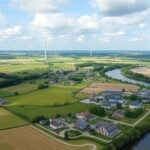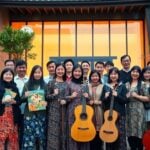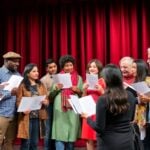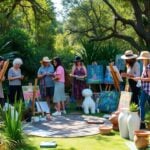Navigating the grant proposal process can often feel like traversing a labyrinth. It is essential to grasp the fundamental components of this journey to enhance your chances of success. At its core, a grant proposal is a formal request for funding, typically submitted to government agencies, foundations, or corporations.
Understanding the specific requirements and expectations of the funding organization is crucial. Each grantor has its own set of guidelines, priorities, and evaluation criteria, which means that a one-size-fits-all approach will not suffice. Familiarizing yourself with these elements can significantly improve your proposal’s chances of being favorably reviewed.
Moreover, the grant proposal process is not merely about writing; it involves strategic planning and relationship building. Engaging with potential funders before submitting your proposal can provide valuable insights into their priorities and preferences. Attend informational sessions, webinars, or networking events hosted by funding organizations to gain a deeper understanding of their mission and objectives.
This proactive approach not only helps you tailor your proposal but also establishes rapport with decision-makers, which can be beneficial in the long run.
Identifying the Problem and Developing the Solution
The foundation of any successful grant proposal lies in clearly identifying the problem you aim to address. This requires thorough research and a deep understanding of the issue at hand. Start by conducting a needs assessment to gather data and evidence that highlights the significance of the problem.
Utilize surveys, interviews, and existing literature to paint a comprehensive picture of the situation. The more compelling your evidence, the more likely funders will recognize the urgency and importance of your project. Once you have identified the problem, the next step is to develop a well-thought-out solution.
This involves outlining your project’s objectives and how they align with addressing the identified issue. Be specific about the strategies you plan to implement and how they will lead to measurable outcomes. For instance, if you are proposing a community health initiative aimed at reducing obesity rates, detail the programs you will introduce, such as nutrition education workshops or physical activity classes.
By presenting a clear and actionable plan, you demonstrate to funders that you have not only identified a pressing issue but also possess the expertise and vision to tackle it effectively.
Researching and Selecting the Right Grant Opportunity
Finding the right grant opportunity is akin to matchmaking; it requires careful consideration and alignment between your project and the funder’s goals. Begin by compiling a list of potential funding sources that align with your mission and objectives. Utilize online databases, grant directories, and resources from local foundations to identify opportunities that resonate with your project.
Pay close attention to eligibility criteria, funding limits, and application deadlines to ensure that you are targeting grants that are a good fit. Once you have identified potential grants, delve deeper into each funder’s mission statement and past funding history. Understanding their priorities will help you tailor your proposal to meet their expectations.
For example, if a foundation has previously funded projects focused on environmental sustainability, emphasize how your initiative contributes to this cause. Additionally, consider reaching out to program officers or grant managers for clarification on any questions you may have about their funding priorities. This not only demonstrates your interest but also provides an opportunity to gather insights that can strengthen your proposal.
Crafting a Compelling Project Description
A compelling project description serves as the heart of your grant proposal, capturing the essence of your initiative and persuading funders of its value. Begin by clearly articulating your project’s goals and objectives in a concise manner. Use clear language that avoids jargon while still conveying the significance of your work.
Funders should be able to grasp the purpose of your project within the first few sentences. In addition to outlining your goals, it is essential to provide context for your project. Explain why this initiative is necessary and how it addresses the identified problem.
Incorporate data and anecdotes that illustrate the impact of the issue on your target population or community. For instance, if you are proposing an educational program for underprivileged youth, share statistics on educational disparities in your area and personal stories that highlight the challenges faced by these students. By weaving together facts and narratives, you create a compelling case for why your project deserves funding.
Developing a Realistic Budget and Timeline
A well-structured budget and timeline are critical components of any grant proposal, as they demonstrate your project’s feasibility and planning capabilities. Start by creating a detailed budget that outlines all anticipated expenses associated with your project. This includes direct costs such as personnel salaries, materials, and equipment, as well as indirect costs like administrative expenses.
Be transparent about how you arrived at these figures, providing justifications for each line item. In tandem with your budget, develop a realistic timeline that outlines key milestones and deliverables throughout the project’s duration. Break down your project into phases, specifying when each phase will begin and end.
This not only helps funders understand how you plan to execute your project but also showcases your organizational skills. For example, if your project involves multiple workshops over several months, provide a timeline that details when each workshop will take place and what outcomes are expected at each stage.
Demonstrating the Impact and Sustainability of the Project
Funders are increasingly interested in understanding not only the immediate impact of a project but also its long-term sustainability. To address this concern, it is essential to articulate how your project will create lasting change within the community or target population. Begin by outlining specific metrics you will use to measure success—these could include quantitative data such as participant numbers or qualitative feedback from beneficiaries.
In addition to demonstrating impact, discuss how you plan to sustain the project beyond the initial funding period. This could involve strategies such as securing additional funding sources, building partnerships with local organizations, or developing revenue-generating activities related to your project. For instance, if you are proposing a community garden initiative, explain how you plan to engage volunteers and local businesses to ensure its continued operation after grant funding ends.
By addressing both immediate outcomes and long-term sustainability, you present a comprehensive vision that appeals to funders’ interests.
Writing a Strong Executive Summary and Cover Letter
The executive summary and cover letter serve as your proposal’s first impression; therefore, they must be engaging and informative. The executive summary should encapsulate the essence of your project in a concise manner—typically no more than one page—highlighting key elements such as the problem being addressed, proposed solutions, anticipated outcomes, and budgetary needs. Think of it as an elevator pitch; it should entice funders to read further into your proposal.
The cover letter complements the executive summary by providing context for your request. Use this opportunity to introduce yourself or your organization, briefly explain why you are seeking funding from this particular source, and express gratitude for their consideration. Personalizing the letter by referencing specific aspects of the funder’s mission or previous work can help establish rapport and demonstrate genuine interest in collaboration.
Reviewing and Editing the Grant Proposal
Once you have completed your grant proposal, it is crucial to dedicate time to review and edit it thoroughly before submission. A polished proposal reflects professionalism and attention to detail—qualities that funders value highly. Start by revisiting each section of your proposal to ensure clarity and coherence; check for any inconsistencies or gaps in information that may confuse reviewers.
Consider seeking feedback from colleagues or mentors who have experience in grant writing or knowledge of your project’s subject matter. Fresh eyes can catch errors or suggest improvements that you may have overlooked. Additionally, ensure that your proposal adheres to any formatting guidelines provided by the funder; failure to comply with these requirements can result in disqualification regardless of the proposal’s quality.
By investing time in careful review and editing, you enhance not only the clarity of your message but also its overall impact on potential funders. In conclusion, securing funding through grants requires a strategic approach that encompasses understanding the process, identifying problems and solutions, researching opportunities, crafting compelling descriptions, developing realistic budgets and timelines, demonstrating impact and sustainability, writing strong executive summaries and cover letters, and thorough reviewing and editing. By following these actionable tips and learning from real-world examples, individuals seeking scholarships, fellowships, grants, loans, or investments can significantly enhance their chances of success in obtaining funding for their projects or initiatives.


























